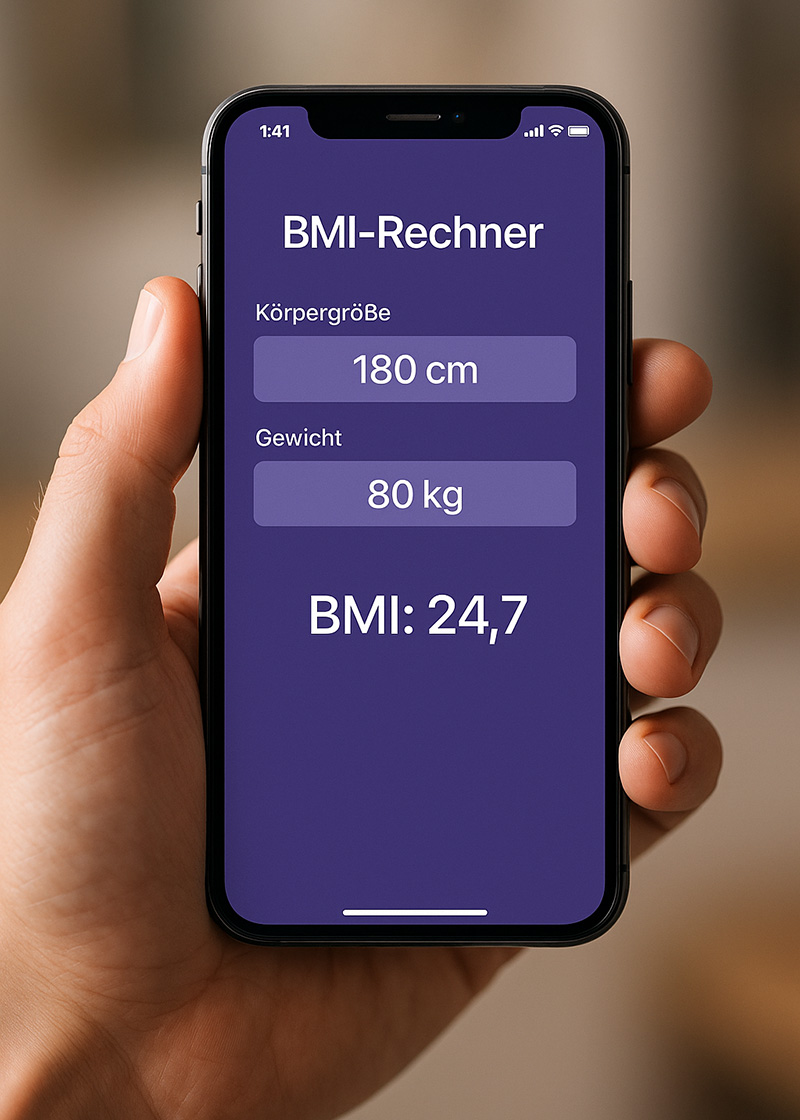Legal Warnings Against Health Tools: When Harmless Health Apps Become Legal Pitfalls
Online health tools are booming, but many operators underestimate the legal risks. At what point does a simple BMI calculator become a regulated medical device? And why don’t disclaimers protect against legal warnings?
BMI calculators, diabetes risk tests, and other digital health tools have become a staple feature on many websites. They may appear harmless and useful, yet this very assumption can become costly. Increasingly, such applications are being targeted by legal warnings and official inspections. The reason: many operators fail to recognize when their software is legally considered a medical device and the strict requirements of the Medical Device Regulation (MDR, Regulation EU 2017/745) that come with it.
The Critical Threshold: Calculation vs. Medical Interpretation
The key point is not the pure calculation of numbers, but their medical interpretation. A simple BMI calculation is completely unproblematic – it only provides a mathematical value without any diagnostic or therapeutic purpose.
It only becomes critical when interpretation is added: as soon as the software medically classifies this value and, for example, displays “You are obese” or warns “Your risk for type 2 diabetes is increased,” it crosses the threshold into being a medical device. Here, individual vital data is being subsumed into a medical assessment.
More Examples of Critical Functions:
However, general health information remains harmless – for example, the note that being overweight is a risk factor for diabetes – as long as it is not patient-specific and does not guide action.
Disclaimer Myth: “This App Does Not Replace a Doctor” Doesn’t Help
A widespread misconception among providers: that statements like “For informational purposes only” or “This app does not replace a doctor” would protect against regulatory requirements. This strategy is ineffective.
While the MDR does consider the intended purpose, it is not assessed purely subjectively. Authorities and courts objectively review whether the software’s function is capable of influencing medical decisions. A liability disclaimer does not change this – the regulatory scope depends on the actual function, not on marketing statements.
Protect Yourself from Regulatory Risks
Sign up now for our Regulatory Update Newsletter and stay informed about the latest regulatory changes.
ECJ Case Law Confirms Objective Assessment Standard
Snitem/Philips decision (December 7, 2017, C 329/16): The ECJ made it clear that software using patient data to provide medically relevant information such as contraindications or interactions is a medical device – even without any physical effect on the human body. The decisive factors are the medical intended purpose and the ability to influence decision-making processes. The earlier “Brain Products” decision (C 219/11) is often wrongly cited as an argument for the effectiveness of disclaimers. However, here too the ECJ clarified: the manufacturer’s intended purpose cannot be considered separately from the actual product function. The message is clear: if software is objectively intended to make patient-specific data usable for medical decisions, a contradictory statement is not sufficient.
The case law of the European Court of Justice clearly supports this approach:
Stricter Requirements Under the MDR
Rule 11 in Annex VIII of the MDR: Class IIa: Software providing information for diagnostic or therapeutic decisions Class IIb: If there are potentially serious consequences (deterioration of health, surgical intervention) Class III: In cases of life-threatening risk Class I: Pure data storage or visualization without interpretation
The MDR has further tightened requirements, particularly when it comes to risk classification.
Practical Implications: Full Conformity Assessment Required
Incorrect risk classification renders the CE marking misleading – resulting in official measures and competitive legal warnings.
This regulation has far-reaching consequences: many applications that were previously considered Class I products must now undergo a full conformity assessment procedure with the involvement of a Notified Body.
Physician Reservation Does Not Protect Against Medical Device Regulation
Even if the physician makes the final decision, this does not release the manufacturer from CE marking and the mandatory conformity assessment procedure.
The argument that software cannot be a medical device because diagnosis and treatment are legally reserved for physicians does not hold. The MDR is not based on the actual execution of treatment but on the risk associated with influencing medical decision-making processes.
Conclusion: Compliance Instead of Disclaimers
Disclaimers and legal reservations are no substitute for regulatory compliance. Providers who ignore this risk: Legal warnings Sales bans Fines Liability claims under product liability law The message is clear: legally compliant health tools require more than a disclaimer – they need full regulatory compliance from the outset.
The conclusion is clear: anyone offering patient-specific analyses or risk assessments must classify the software as a medical device, correctly determine the risk class, and carry out a complete conformity assessment procedure.
Not Sure How to Classify Your Health App?
Don’t let hidden regulatory traps catch you off guard. The line between a harmless tool and a regulated medical device is often narrower than you think. As a legal manufacturer and experts in medical software, BAYOOCARE supports you with all questions related to MDR compliance, risk classification, and conformity assessment – from the very first product idea to successful market launch in over 30 countries.
Our Expertise Includes:
Better to ask one time too many than one time too few – regulatory compliance is cheaper than making corrections later.
Contact us for a non-binding initial consultation.




